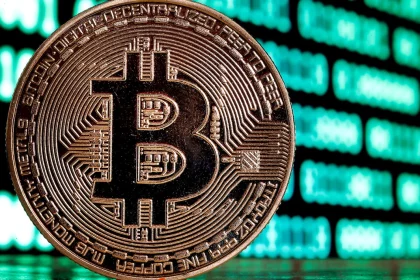A blockchain is a shared distributed database or ledger between computer network nodes. A blockchain serves as an electronic database for storing data in digital form. The most well-known use of blockchain technology is for preserving a secure and decentralized record of transactions in cryptocurrency systems like Bitcoin. The novelty of a blockchain is that it fosters confidence without the necessity for a reliable third party by ensuring the integrity and security of a record of data.
The way the data is organized on a blockchain differs significantly from how it is typically organized. In a blockchain, data is gathered in groups called blocks that each include sets of data. Blocks have specific storage capabilities, and when filled, they are sealed and connected to the block that came before them to create the data chain known as the blockchain. Every additional piece of information that comes after that newly added block is combined into a brand-new block, which is then added to the chain once it is full.
A blockchain, as its name suggests, arranges its data into pieces (blocks) that are connected together, whereas a database typically organizes its data into tables. When used in a decentralized way, this data structure creates an irreversible chronology of data by design. When a block is completed, it is irrevocably sealed and added to the timeline. When a block is added to the chain, it receives a precise timestamp.
The Function of a Blockchain
Blockchain aims to make it possible to share and record digital information without editing it. A blockchain serves as the basis for immutable ledgers, or records of transactions that cannot be changed, removed, or destroyed. Blockchains are sometimes referred to as distributed ledger technologies because of this.
The blockchain idea was initially put out as a research project in 1991, long before Bitcoin became a widely used application in 2009. Since then, the introduction of several cryptocurrencies, decentralized finance (DeFi) apps, non-fungible tokens (NFTs), and smart contracts has led to an explosive growth in the usage of blockchains.
Blockchain Decentralization
Consider a business with a server farm of 10,000 machines that it uses to keep a database containing all of its clients’ account information. All of these computers are located in a warehouse that belongs to this corporation, and it has complete authority over each of them as well as the data they hold. But this creates a single point of failure. What would happen if the electricity at that place failed? What if the computer’s Internet connection is lost? What if it completely burns down? What happens if a malicious person deletes everything with a single keypress? The information is either missing or damaged.
What a blockchain does is enable the distribution of the data stored in that database across several network nodes located in different places. This not only adds redundancy but also preserves the accuracy of the data stored there; for example, if someone tries to change a record at one database instance, the other nodes won’t be changed, preventing a bad actor from doing so. All other nodes would cross-reference one another and be able to quickly identify the individual who tampered with Bitcoin’s transaction history. This approach aids in creating a clear and precise sequence of events. This prevents any one node in the network from changing the data it contains.
As a result, the data and history (such as those of cryptocurrency transactions) are irreversible. A blockchain may store a variety of data, including legal contracts, state identifications, or a company’s goods inventory. Such a record may be a list of transactions (such as with a cryptocurrency).
Is Blockchain Secure?
Decentralized security and trust are made possible by blockchain technology in a number of ways. To start, new blocks are always chronologically and linearly stored. In other words, they are constantly added to the blockchain’s “end.” It is very difficult to go back and change the contents of a block once it has been put to the blockchain unless a majority of the network has agreed to do so. This is due to the fact that each block has its own hash, as well as the hash of the block that came before it and the aforementioned date. A mathematical function that converts digital information into a string of numbers and letters produces hash codes. If such data has been altered in any manner.
Imagine a hacker who also manages a node on a blockchain network wants to change a blockchain and take everyone else’s bitcoin. If they changed their own copy, it wouldn’t match the copies made by everyone else. When everyone compares their copies to one another, they will notice that this one copy stands out, and the hacker’s version of the chain will be rejected as fraudulent.
For such a hack to be successful, the hacker would need to simultaneously possess and change at least 51% of the blockchain copies, making their new copy the majority copy and, thus, the agreed-upon chain. The requirement to rewrite every block because their timestamps and hash codes have changed would make such an attack very expensive and resource-intensive.
The expense to pull off such a feat would probably be impossible due to the scale of many cryptocurrency networks and how quickly they are developing. Not only would this be very costly, but it would probably be useless. As network participants would observe such significant changes to the blockchain, doing such a thing would not go undetected. The network’s users would then abruptly switch to an unaffected version of the chain. As a result, the token version that was attacked would lose value, rendering the attack ultimately useless because the malicious party would then be in control of a worthless asset. The same thing would happen if the malicious party targeted Bitcoin’s most recent fork.
Bitcoin vs. Blockchain
Stuart Haber and W. Scott Stornetta, two researchers interested in implementing a system where document timestamps could not be altered, initially proposed the concept of blockchain technology in 1991. But blockchain didn’t have its first practical use until over two decades later, with the introduction of Bitcoin in January 2009.
On a blockchain, the Bitcoin protocol is constructed. Bitcoin’s anonymous founder, Satoshi Nakamoto, described the digital currency as “a new electronic cash system that’s totally peer-to-peer, with no trusted third party” in a research paper introducing it.
It’s important to note that blockchain is only utilized by Bitcoin to immutably record a ledger of payments in a transparent manner. In principle, though, blockchain could be used to immutably record any number of data points. This might take the shape of transactions, votes in elections, goods inventories, state identifications, deeds to properties, and much more, as was previously said.
In addition to recording transactions, tens of thousands of projects are currently working to utilize blockchain technology in a number of other ways to benefit society. One such application is a secure voting system for democratic elections. The immutability of blockchain technology makes it far more difficult to conduct fraudulent voting. For instance, a voting process may be designed so that each nation’s resident receives a single coin or token. The voters would then deposit their token or cryptocurrency to the address of whatever candidate they choose to support. Each candidate would then be granted a unique wallet address. Both the necessity for manual vote counting and the capacity of bad actors to interfere would be eliminated by blockchain’s transparency and traceability.
The conclusion
Blockchain is finally establishing itself, in no little part because to bitcoin and cryptocurrencies, with several real-world uses for the technology now being deployed and researched. Blockchain, a phrase on everyone’s lips as an investor in the country, promises to reduce middlemen while increasing accuracy, efficiency, security, and cost-effectiveness in commercial and government activities.
It’s no longer a matter of if legacy organizations will adopt blockchain technology—a it’s question of when—as we get ready to enter the third decade of the technology. NFTs are becoming more and more prevalent nowadays, and assets are being tokenized. Blockchain will experience significant expansion during the next decades.





